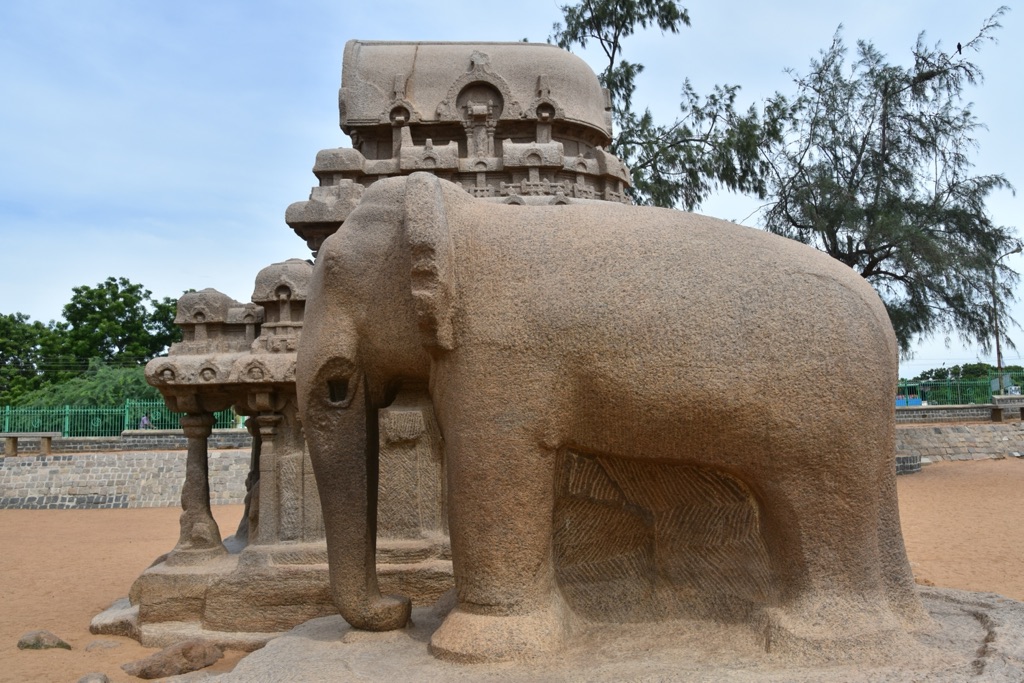The Pancha Rathas is an exemplary set of rock-cut temples located in the coastal town of Mahabalipuram, in the state of Tamil Nadu, India. These ancient structures, carved during the 7th century, are named after the Pandavas, the heroes of the Indian epic Mahabharata. The site is unique for its monolithic architecture, with each temple carved from a single piece of stone. The Pancha Rathas complex is part of the Group of Monuments at Mahabalipuram, which UNESCO designated as a World Heritage Site in 1984.
Get your dose of History via Email
Historical Background of Pancha Rathas
The Pancha Rathas were sculpted during the reign of the Pallava king Narasimhavarman I, also known as Mamalla, in the 7th century AD. The site was discovered by British explorers in the 19th century. It is believed that the temples were not completed due to the death of Narasimhavarman I. The structures remained unused, which might explain their well-preserved state. The Pancha Rathas played no role in the religious life of the region, as they were never consecrated.
These monuments showcase the early phases of Dravidian architecture and the innovative artistry of the Pallavas. The Pallavas were instrumental in the transition from rock-cut architecture to stone temples. The Pancha Rathas, in particular, are an architectural experiment by the Pallavas to replicate wooden structures in rock, a technique that influenced later South Indian temple architecture.
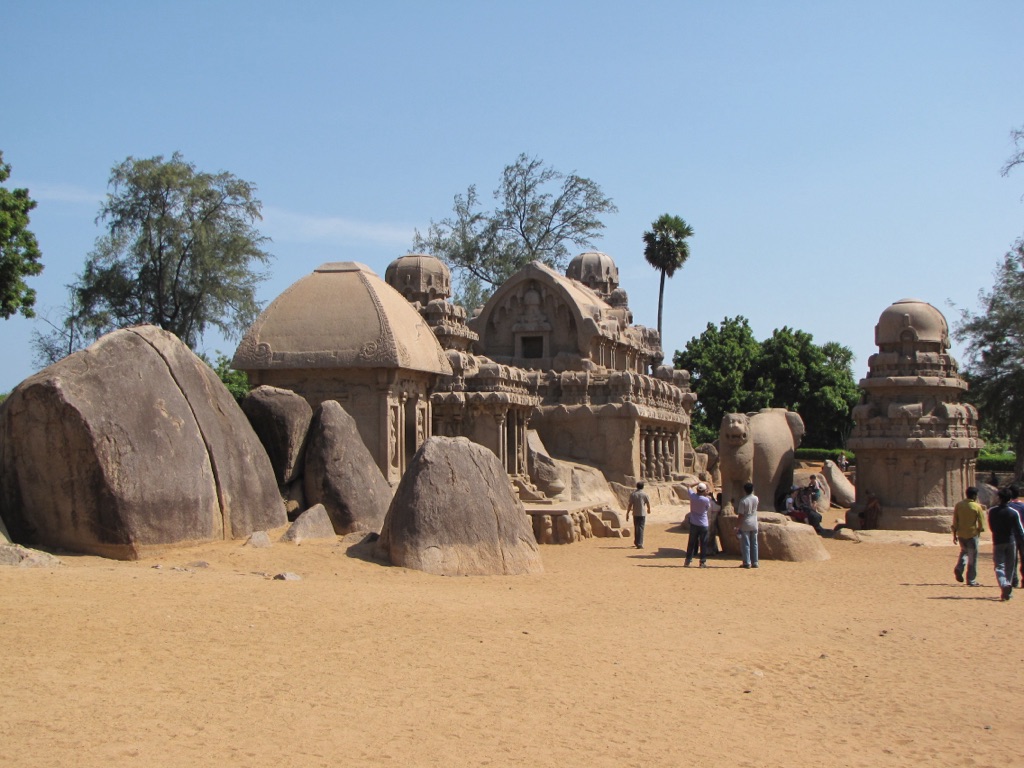
Each ‘Ratha’ or chariot is associated with a deity or character from Hindu mythology. However, these associations are modern attributions and not historically verified. The Rathas are named after the Pandavas – Yudhishthira, Bhima, Arjuna, Nakula, and Sahadeva – and their common wife Draupadi, and an elephant. The Rathas remained hidden in plain sight for centuries, covered by sand until the British cleared the area in the 19th century.
The Pancha Rathas have withstood the test of time and natural elements, including the 2004 Indian Ocean tsunami, which affected the coastal region of Mahabalipuram but left the monuments unscathed.
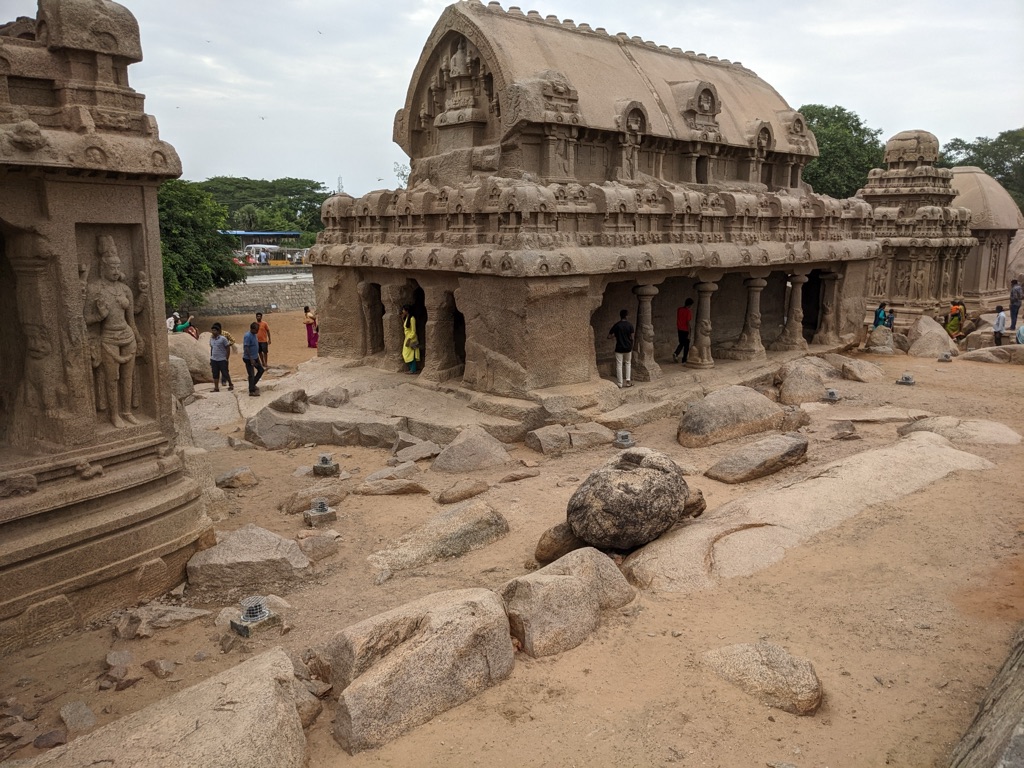
Despite their name, the Rathas were not intended to be chariots. They were instead temples or models of temples, showcasing the diversity of Dravidian architecture. The fact that they were never consecrated has led to much speculation about their intended purpose, which remains a mystery to this day.
About Pancha Rathas
The Pancha Rathas are monolithic structures, each carved from a single large piece of stone. The Rathas vary in their architectural styles, with influences ranging from Dravidian to Buddhist. The site includes square and apsidal layouts, pyramidal and wagon-vaulted roofs, which reflect a mix of South Indian temple architectural styles.
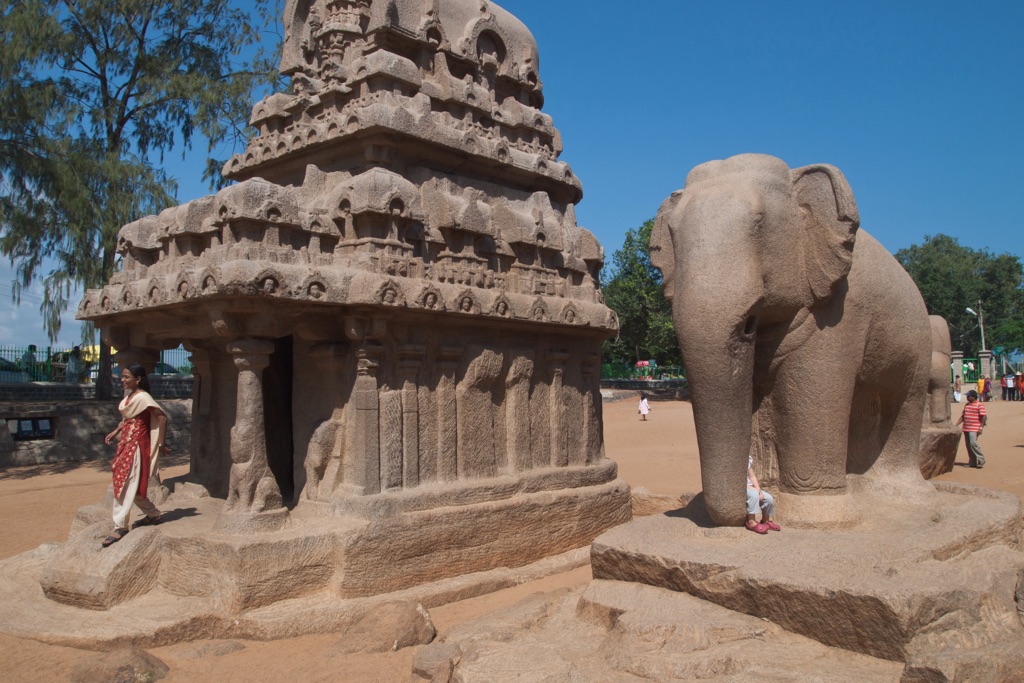
The largest of the Rathas is dedicated to Dharmaraja Yudhishthira, which stands out for its intricate carvings and massive size. The Bhima Ratha, with its barrel-vaulted roof, is reminiscent of Buddhist cave architecture. The Arjuna Ratha is a square building with an intricately carved facade, while the Nakula Sahadeva Ratha stands apart with its apsidal end and a monolithic stone elephant nearby.
The Draupadi Ratha is the smallest and is dedicated to the goddess Durga, with a lion, her vahana or vehicle, carved in relief near the structure. The Rathas are adorned with sculptures of gods, humans, and animals, with each temple exhibiting different types of pillars and doorkeepers (dvarapalas).
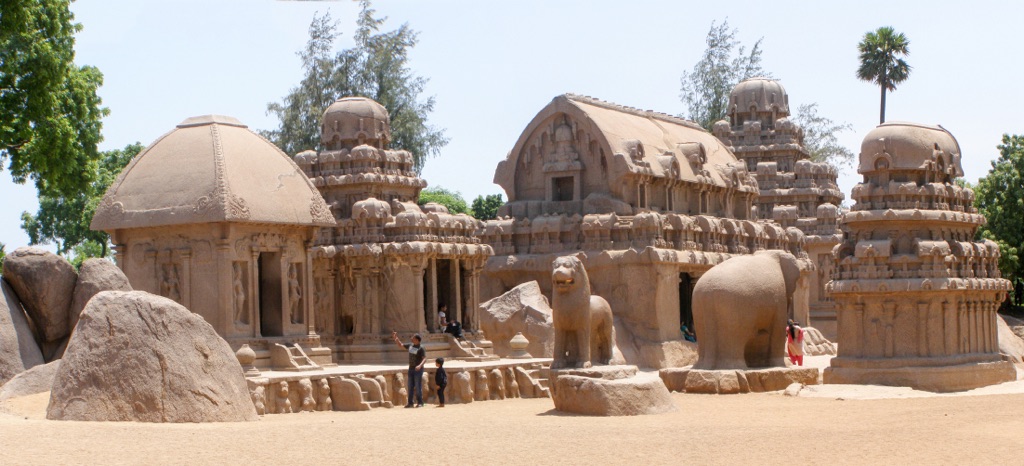
The construction technique involved chiseling away the granite rock from top to bottom, a method that required precise planning and execution. The artisans of the Pallava dynasty demonstrated their skill by transforming the rock into elaborate structures without the use of mortar or joining materials.
The Pancha Rathas are not only significant for their architectural beauty but also for their role in the evolution of Indian temple design. They represent a formative stage in the development of South Indian temple architecture, which would later flourish in the region.
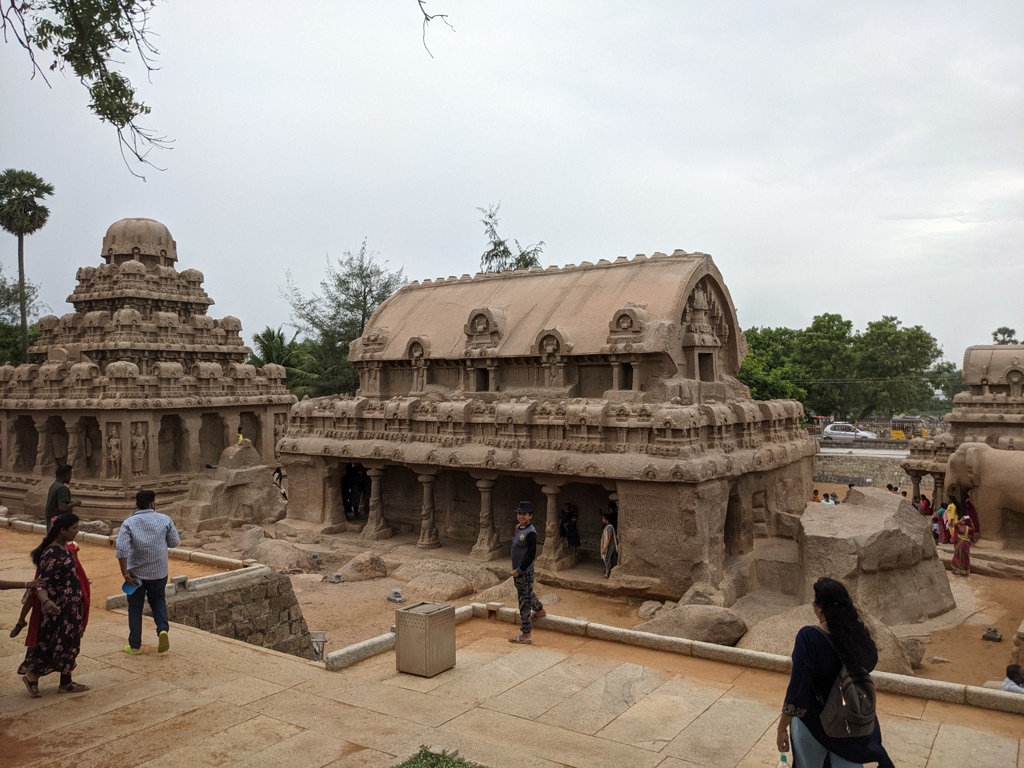
Theories and Interpretations
There are several theories about the purpose of the Pancha Rathas. Some scholars suggest they were intended as models or prototypes for future temples.
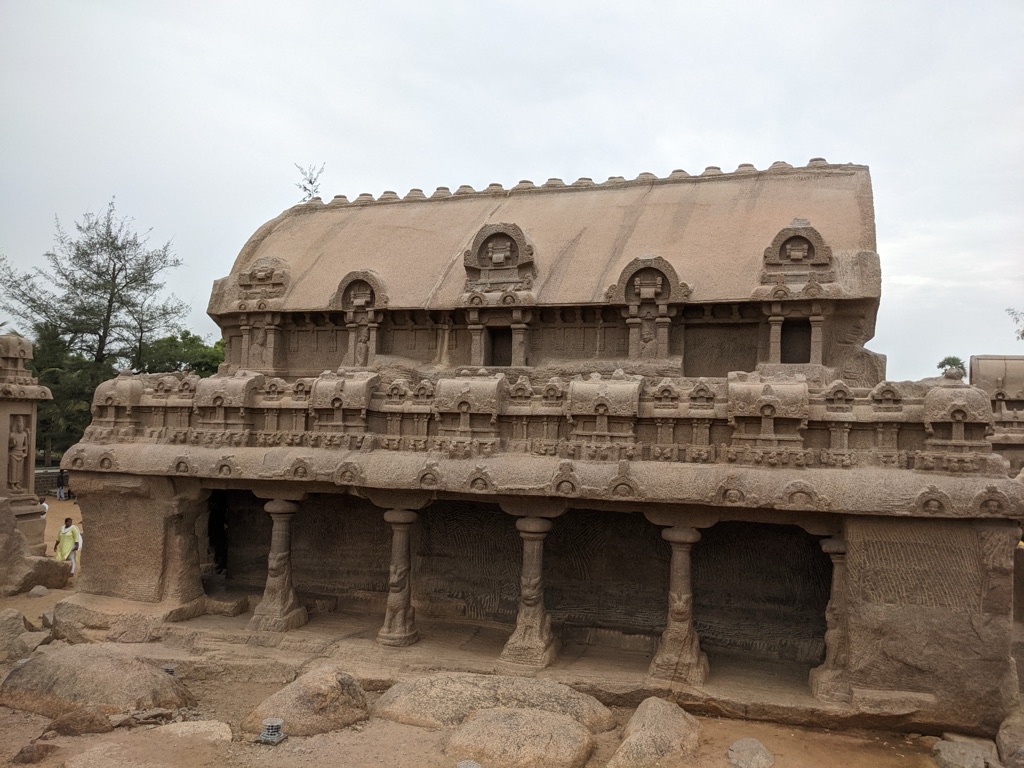
The Rathas’ association with the characters of the Mahabharata is not based on historical evidence but rather on local tradition. This has led to various interpretations of the site’s iconography and its relation to the epic narrative. The absence of any inscriptions or textual references from the period makes it difficult to ascertain the original intent behind the structures.
The dating of the Pancha Rathas has been carried out through stylistic analysis, comparing them with other known works of Pallava art and architecture. The consensus among historians places their construction in the mid-7th century AD, during the reign of Narasimhavarman I.

Some aspects of the Rathas, such as the choice of deities and the architectural styles, have been matched with historical records of the Pallava dynasty. These comparisons have helped historians understand the religious and cultural milieu of the time.
Despite the many theories and interpretations, the Pancha Rathas unfinished state and lack of religious use have puzzled historians and archaeologists, making the site a fascinating subject for ongoing research and exploration.
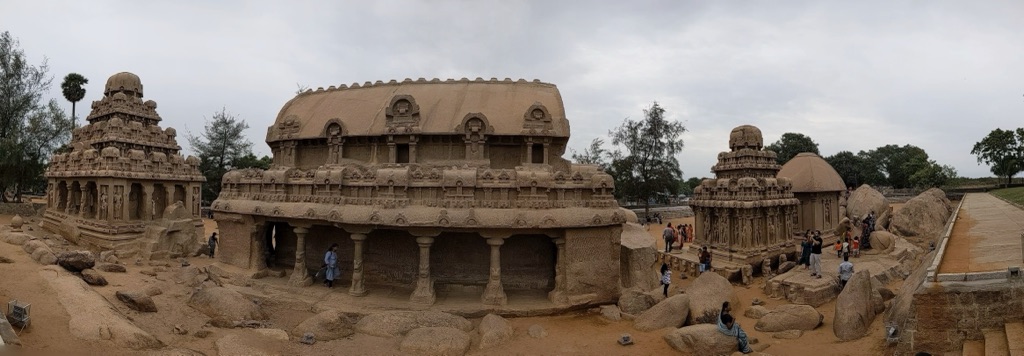
At a glance
Country: India
Civilization: Pallava dynasty
Age: 7th century AD

